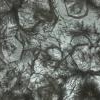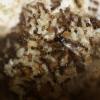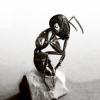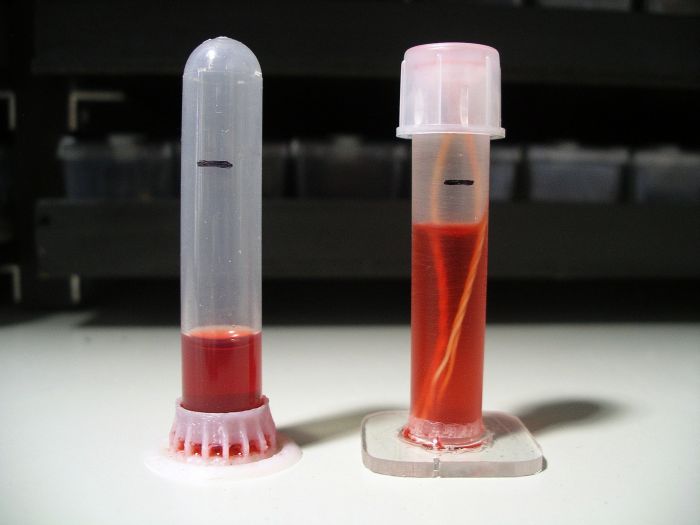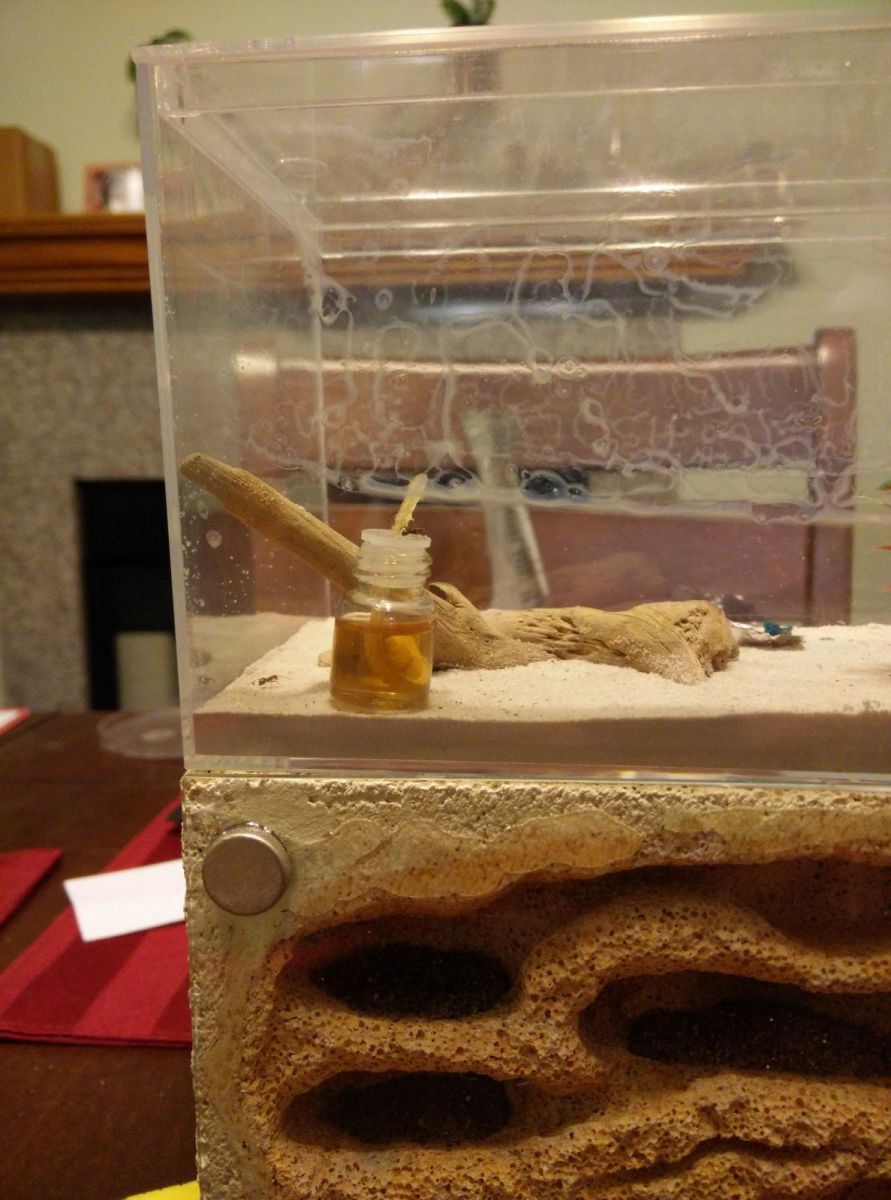About three weeks ago, I quickly thew something together just to test out the concept. I used kevlar for the wick since it's very strong and also fairly hydrophilic, unlike some of the other popular kevlar-like materials that are intentionally designed to be hydrophobic, and therefor useless in capillary action. I only had kevlar belt at the time, so I just had to pull off some strands.
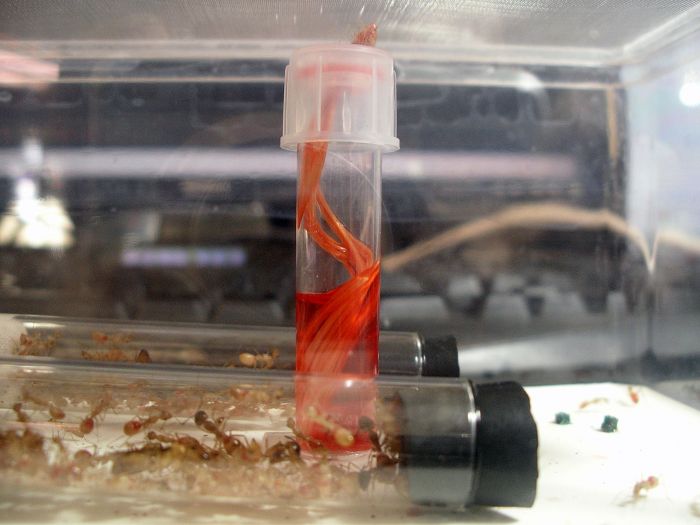
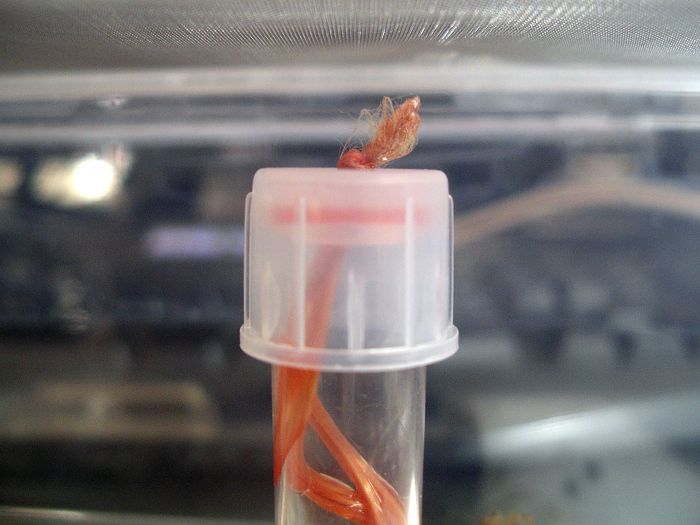
Even though I never actually saw any of the ants drinking from it, their gasters have been bulging with bright red liquid, so it's obvious they have been.
Yesterday I got my kevlar string so I made another prototype. I took a large sewing needle and poked the string through the soft PP test tube caps. It loops over so there's no way it will fall out.
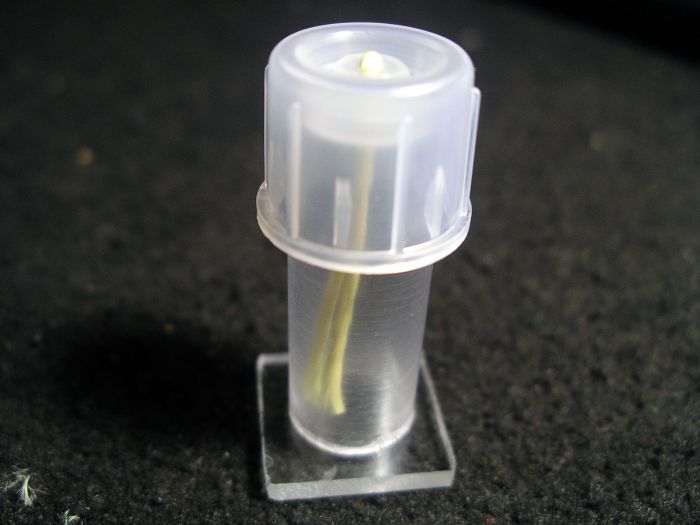
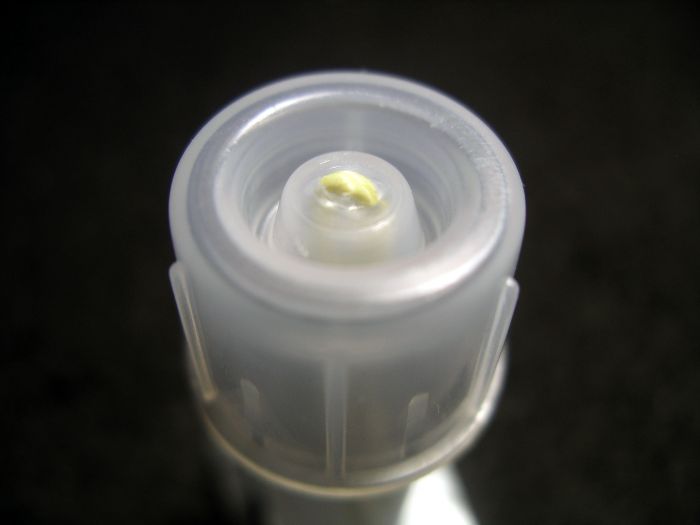
It was nice how the PP actually closed tightly around the string after pushing a slightly larger needle through, but that actually causes a problem. After filling them up and pushing the caps on, the liquid kept bubbling out slowly due to the pressure. I just poked two very tiny holes on each side of the string to solve that problem.
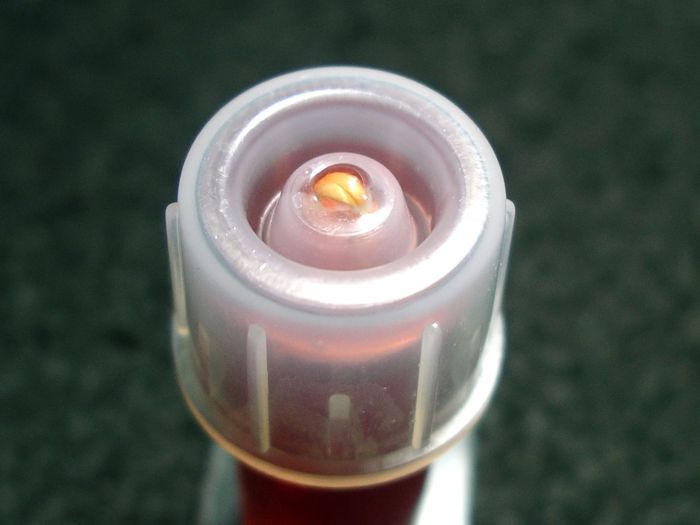
So far they're working great.
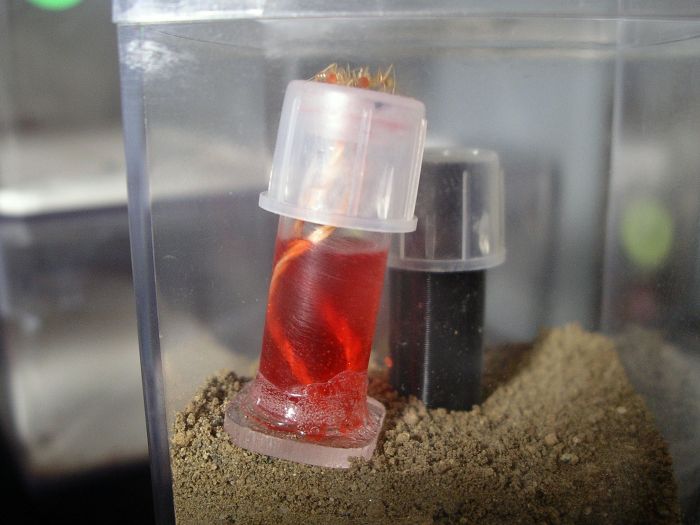
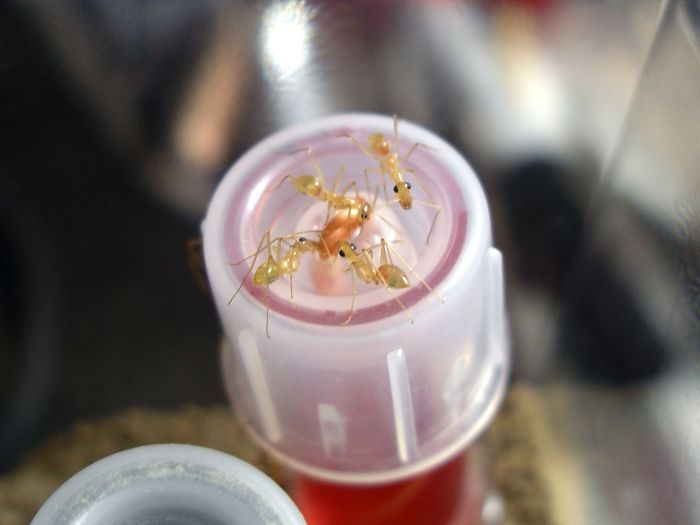
I put barely any liquid in one of them, and it soaked right up the string no problem.
One of the things I'm trying to achieve is less evaporation, so I'll be testing that out also. I also need to make sure they continue to soak up liquid as well as they do in the beginning.
I'm planning to 3D print these to the exact shape I want. No way am I going to be gluing a hundred tubes to plastic bases.







